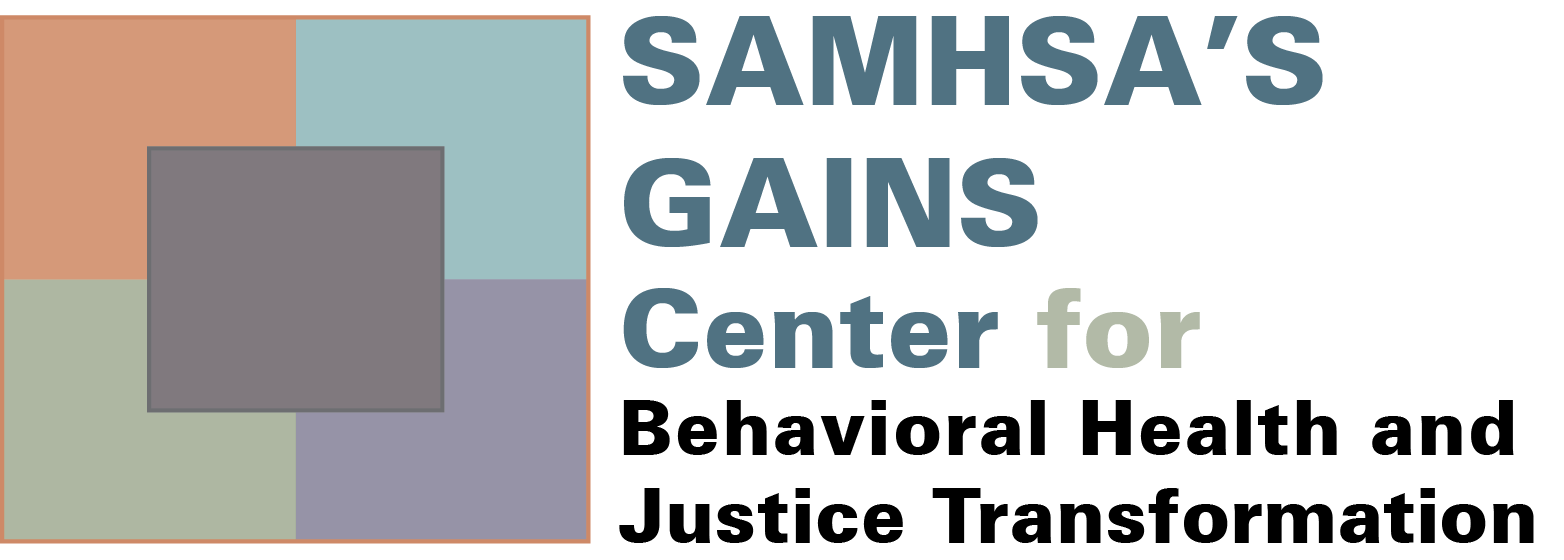Here at SAMHSA’s GAINS Center, we want to acknowledge and help foster conversations and change around one critical issue that has long been present but is often not discussed in our work to improve criminal justice and behavioral health systems. That issue is the reality of disparate outcomes for people of color in the behavioral health and criminal justice systems.
It is widely documented that racial disparities and disproportionalities exist across systems, including the criminal justice and behavioral health systems.
- In state and federal prisons, 33 percent of the incarcerated population is identified as black, which is disproportionate when compared to 13 percent of the United States general population (Carson, 2018).
- Historically and into the present, black people are arrested more often for drug violations. In 1995, 40 percent of arrests for drug violations involved black people (Langan, 1995); in 2016, nearly 30 percent of drug violation arrests involved black people (U.S. Department of Justice, 2017).
- This disparity varies by jurisdiction with one study revealing a major metropolitan-wide disparity in arrests for drug charges of 1.73 people of color per every one white person arrested; in areas of the city that are predominately white, 12.4 people of color were arrested for drug charges per every one white person arrested for similar charges (Fielding-Miller, Davidson, & Raj, 2016).
- Yet, black and white people use drugs at similar rates, with a smaller proportion of black people using illicit drugs than white people, 46 percent versus 54 percent, respectively (SAMHSA, 2017).
- Men of color are observed to receive significantly fewer dispositions to post-adjudication drug treatment programs and receive more dispositions to prison (Nicosia, MacDonald, & Arkes, 2013).
- People who identified their race as Asian or their ethnicity as Hispanic were more likely than people who identified as white to have unmet needs for substance use treatment (Mulvany-Day, et al., 2012).
- Among people needing treatment for illicit drug use, 85 percent of black people did not receive treatment compared to 81 percent of white people who did not receive needed treatment (SAMHSA, 2017).
- Middle class black people are less likely to be offered appointments by mental health clinicians, when reaching out by phone to schedule an appointment, than middle class white people (Kugelmass, 2016).
These facts point to systemic problems that need to be addressed through dialogue, action, and research.
Over the next few months, SAMHSA’s GAINS Center will be featuring researchers or practitioners who are providing the field with new insights, guidance, and leadership to address disparate outcomes. This information will be focused on the criminal justice and/or behavioral health systems, which we know are highly interconnected in many communities. Disparities that exist in behavioral health may impact the criminal justice system and vice versa. So, we are excited to share this information and, hopefully, inspire dialogue and changes in practice to ensure that people of color are equally able to benefit from the improvements and recommendations that are pushed out from SAMHSA’s GAINS Center and SAMHSA every day.
References
Bronzon, J., Stroop, J., Zimmer, S., & Berzofsky, M. (2017). Drug Use, Dependence, and Abuse among State Prisoners and Jail Inmates, 2007-2009. US. Office of Justice Programs, Bureau of Justice Statistics. NCJ 250546. Retrieved 1/15/18 at http://www.bjs.gov/index.cfm?ty=pbdetail&iid=5966.
Carson, E. (2018). Prisoners in 2016. U.S. Office of Justice Programs, Bureau of Justice Statistics. NCJ 251149. Retrieved 1/15/18 at http://www.bjs.gov/index.cfm?ty=pbdetail&iid=6187.
Fielding-Miller, R., Davidson, P., & Raj, A. (2016). Blacks face higher risk of drug arrests in White neighborhoods. Int J Drug Policy, 32: 100-103.
Kugelmass, H. (2016). “Sorry, I’m Not Accepting New Patients”: An Audit Study of Access to Mental Health Care. Journal of Health and Social Behavior, 57(2): 168-183.
Langan, P. 1995. The Racial Disparity in U.S. Drug Arrests. U.S. Department of Justice, Bureau of Justice Statistics, #174600.
Nicosia, N., MacDonald, J.M., & Arkes, J. (2013). Disparities in criminal court referrals to drug treatment and prison for minority men. Am J Public Health, 103(6): e77-e84.
Substance Use and Mental Health Services Administration, Center for Behavioral Health Statistics and Quality. (2017). Results from the 2016 National Survey on Drug Use and Health: Detailed Tables. Retrieved 1/18/18 at https://www.samhsa.gov/data/sites/default/files/NSDUH-DetTabs-2016/NSDUH-DetTabs-2016.pdf.
U.S. Department of Justice – Federal Bureau of Investigation. (2017). Crime in the United States, 2016. Table 21. Retrieved 1/18/18 at https://ucr.fbi.gov/crime-in-the-u.s/2016/crime-in-the-u.s.-2016/topic-pages/tables/table-21.


